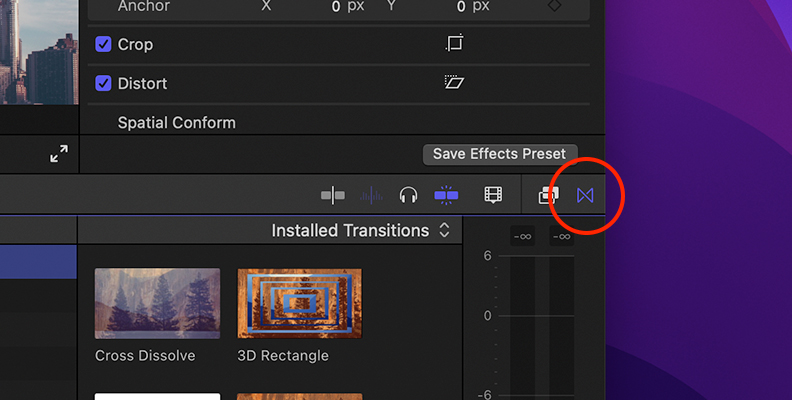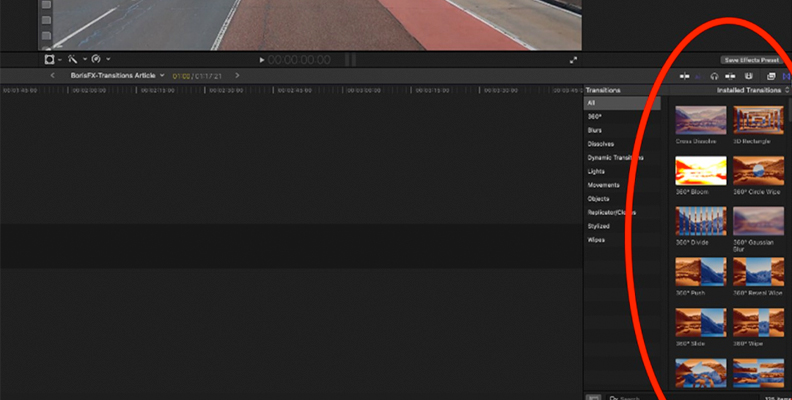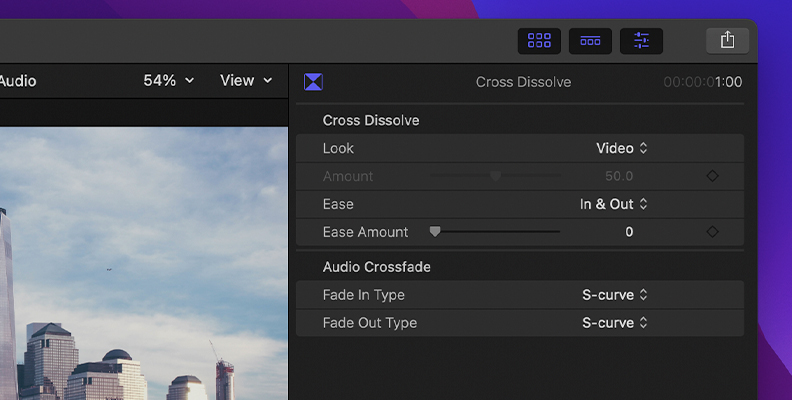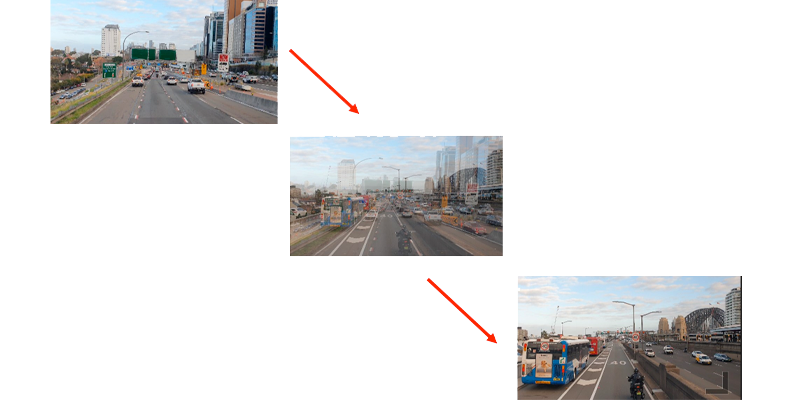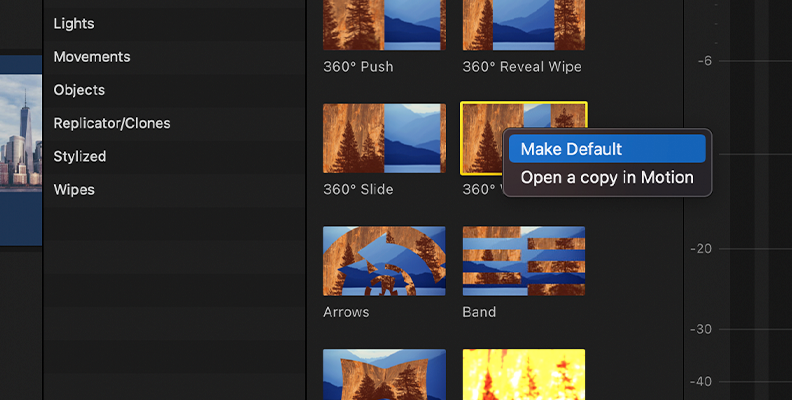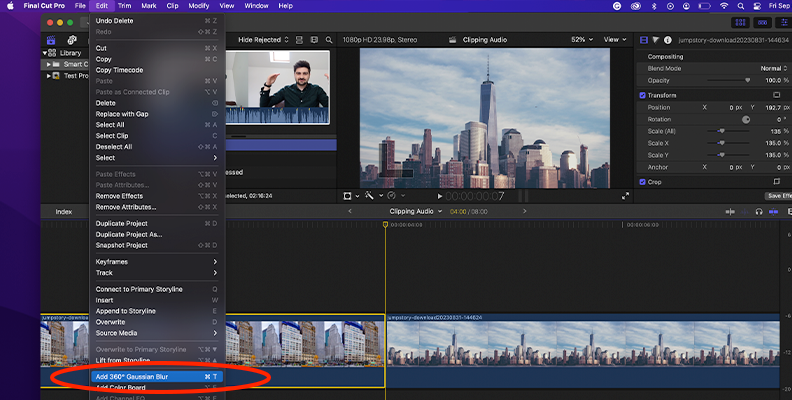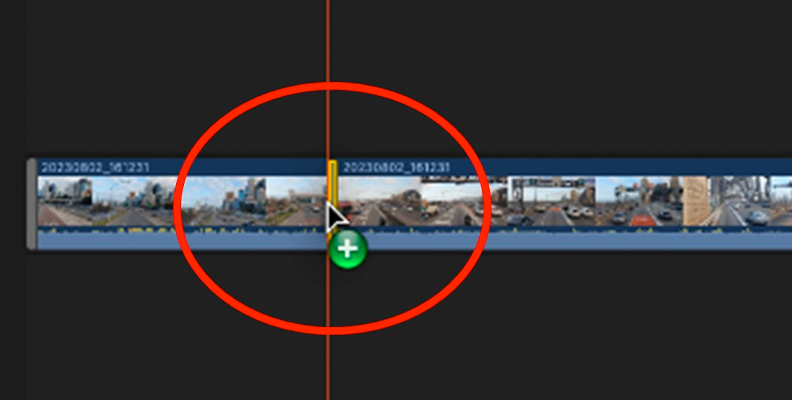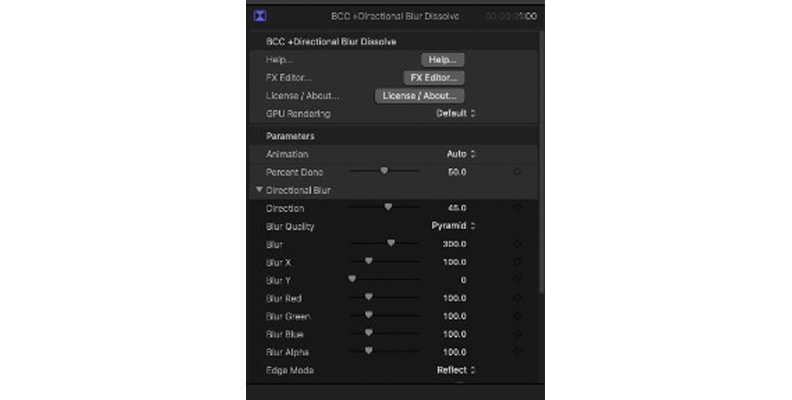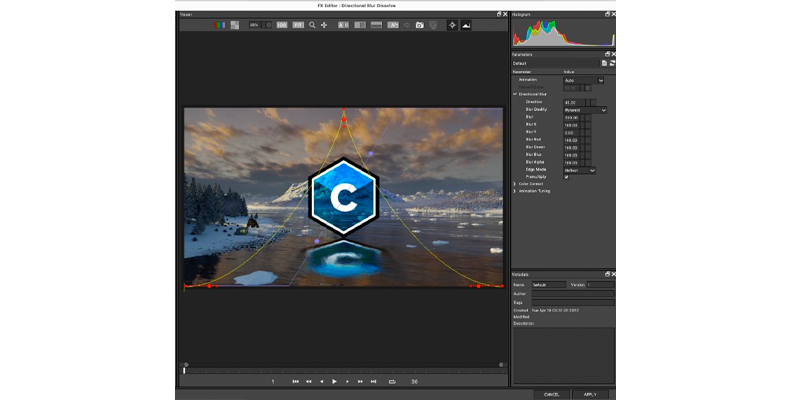Transitions are a fundamental part of video editing and are a way of moving between scenes or clips in your video project. They make your videos more interesting, add flow to the movement between your scenes, and avoid the distraction that a sudden jump from one clip to another might create.
In Final Cut Pro, Apple's flagship video editing software, there are several built-in options for adding video transitions seamlessly. They work well and give you an easy way to add transitions to manage the flow of your project between one video clip and another.
Better still, you can use external plug-ins to create a more complex or interesting transition effect to elevate your project. The additional features and customization that external plug-ins offer can help make your project stand out.
In this post, we'll look at how to add a transition in Final Cut Pro using both the built-in options and an external plug-in from the versatile BorisFX suite of video editing tools.
Common Video Transitions in Final Cut Pro
There are many types of transitions that you can use in Final Cut Pro, but three of the most common are fades, cross dissolves, and wipes.
Fade
A fade is a gradual increase (fade-in) or decrease (fade-out) in the visibility of a clip. Fade-ins are typically used at the beginning of a scene and fade-outs are used at the end.
Cross Dissolve
A cross dissolve is a gradual disappearance of one clip while simultaneously revealing the next. As its name suggests, this type of transition creates the effect of one clip "dissolving" into the next and is often used to show a passage of time or change in location.
Wipe
A wipe is transitioning between two video clips by moving across the screen. They're used in action sequences with a direction of movement that can be horizontal, vertical, diagonal, or even shape-driven (e.g., using a circle or square).
This transition's name comes from the effect of "wiping" one scene off to reveal the next scene.
How to Add Transition in Final Cut Pro
You can add transitions in Final Cut Pro using the Transition Browser or the Edit Menu. In the Transition Browser, you can select your transition after previewing each type. In the Edit Menu, the type of transition used will be whatever you set as the default.
Let's take a look at both of these approaches.
Using the Transitions Browser
The Transitions Browser (a.k.a., transition browser) gives you ready-to-use transitions to help you seamlessly blend your clips. You'll find the icon for activating the Transitions Browser in the top-right section of your timeline. Or, as a shortcut, simply press CONTROL-COMMAND-5.
Step 1: Locate the Transitions Browser icon and click to activate it.
![]()
Step 2: Preview the available transitions and choose the one you want. You'll find several popular transition types, including dissolves, blurs, and fades. You can see a live preview of any transition by simply hovering your mouse over it.
![]()
Step 3: Click, hold, and drag your chosen transition to the edit point on your timeline, i.e., between the two clips that you're transitioning.
![]()
Step 4 (optional): Adjust the transition duration—click on an edge of the transition in the timeline and drag it left or right to shorten or lengthen the duration of the transition.
![]()
Step 5: Playback and review your transition and make adjustments (or choose another transition) if necessary.
You'll be able to adjust several parameters of your chosen transition, like those shown below for a cross dissolve.
![]()
The below example shows a cross dissolve in action.
![]()
Using the Edit Menu
The Edit menu is located at the top of the Final Cut Pro window in the Menu Bar.
Step 1: Select the edit point on your timeline, i.e., where you want to add the transition. This is the point between the two clips that you'll be transitioning.
Step 2: Select the Edit drop-down menu and hover your mouse over the Add [transition] option, where the type of transition displayed will be the default transition that you have in place (see below).
![]()
Step 3: Click on the default transition if that's what you want to use. If you want to use a different transition, such as a recently used transition, you'll need to first set it up as the default transition.
Step 4: As with the Transitions Browser, you can adjust the transition duration (if you wish) and play back and review your transition.
Setting Up A Default Transition
You can set up a default transition in Final Cut Pro so that it gets applied when you use a shortcut (e.g., COMMAND-T) or when you use the Edit Menu bar.
Default transitions help you streamline your workflow and maintain consistency across your project.
Step 1: Open the Transitions Browser and preview the available transitions.
Step 2: Once you've chosen your preferred transition, right-click (or CTRL-click) that transition.
Step 3: From the context menu that appears, select Make Default.
![]()
You can now use the transition you've just set up as a default whenever you use the Add [transition] option from the Edit menu. You can also use the shortcut for this menu selection, i.e., COMMAND-T.
![]()
Transitions in Final Cut Pro with BorisFX
While the transitions available out-of-the-box in Final Cut Pro are good to work with, you'll sometimes want to use a transition that gives you better results. This is where external plug-ins can really make a difference.
BorisFX Continuum is a suite of video FX plug-ins that lets you create effects, transitions, and integrated tracking that go far beyond what you can do with Final Cut Pro's built-in tools. You'll get superior image quality, control, and render speeds that give you impactful results.
We'll look at how to add transitions using BorisFX's Continuum. This is a powerful tool that gives you versatile options for adding and adjusting transitions that enhance the flow and dynamics of your video project.
Installing BorisFX Continuum
First, you'll need to download the Boris FX Final Cut Pro installer for Continuum and follow the installation instructions.
![]()
Transitions using BorisFX Continuum
BorisFX's Continuum is a comprehensive plug-in suite for enhancing visual post-production and has 300+ effects, 40+ transitions, and 5,000+ presets. Continuum offers GPU-accelerated transitions and effects that surpass the capabilities of Final Cut Pro's built-in tools.
Once installed, your Continuum transitions will appear in the Transitions Browser menu under BCC Transitions.
![how to add transitions in final cut pro]()
Step 1: Choose the transition that you want from the available choices under BCC Transitions. For our example, we'll choose BCC + Directional Blur Dissolve.
![]()
Step 2: Drag and drop your chosen transition to your edit point, and adjust the duration and positioning to your liking.
![]()
Step 3: Make any final adjustments using the available parameters—you'll have far more control than you would with the built-in transitions in Final Cut Pro.
![]()
With the Continuum FX Editor, you'll have a high degree of control over the look, feel, and dynamics of your transition. You can, for instance, tweak its direction, blur quality (e.g., pyramid, box, or Gaussian), color control, or animation effects.
![]()
And there you have it!
As you can see, it's easy to use BorisFX Continuum to add transitions in Final Cut Pro. Its wide range of parameter settings gives you plenty of scope for customization to suit the flow and dynamics of your project.
Conclusion
Transitions are an important feature of any video project and serve as the bridge between scenes and clips. They help guide your viewers through your narrative and give your project the flow and dynamics that you want to convey.
When you don't pay enough attention to transitions, or if you don't get it quite right, your video can appear disjointed and may detract from the storytelling impact that you're hoping to achieve.
In Final Cut Pro, adding transitions is straightforward using either the built-in tools or external plug-ins.
But while the built-in tools are good, external plug-ins like BorisFX's Continuum give you superior video transition results through more powerful capabilities and better, more granular customization.
So, the next time you're looking to enhance the flow between clips in your video project, make the most of the transitions available in Final Cut Pro, or better still, reach for quality external plug-ins to take your project to the next level!













